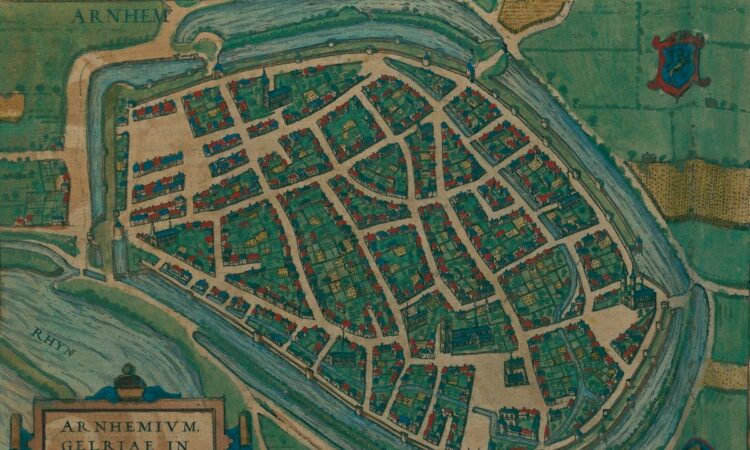
Map of Arnhem, Netherlands, 1581—fleeing Germans are believed to have buried treasure near the city … [+]
The story is a common one—that the Nazis hid a stash of treasure as they retreated from occupied territory at the end of World War Two. In the Netherlands, near the town of Arnhem, legend has it that four German soldiers hid treasure worth at least 2 or 3 million in Dutch guilder in 1945, which today would be worth around $18 million.
80 years later, the National Archives of the Netherlands has just released lots of documents which researchers believe will literally mark the spot where the money was buried. There is one catch—the map is somewhere amongst 1,300 documents. What’s more, there is one that is 7 centimetres thick, and documents the Dutch government’s search for the money after the war, but they weren’t able to retrieve it.
Imagine it is April, 1945 and the Allies are close to liberating the city of Arnhem. 25 miles away, in the small village of Ommeren, some soldiers in the German Wehrmacht are getting nervous about the four ammunition cases they have amongst their belongings, full of watches, gems, coins and jewellery. Annet Waalkens, an adviser at the National Archives told The Guardian that “they decide to bury the treasure, because it’s just getting a bit too hot under their feet and they’re getting scared.”
A certain German soldier, Helmut S, helped to bury the loot and was apparently a little bit too keen to tell everyone upon his return to Berlin. He told people there that the soldiers came across the treasure on the streets when the Arnhem branch of the Rotterdamsche bank was bombed in August 1944.
This knowledge was passed onto the Beheersinstituut, the Dutch Institute of Asset and Property Management who were responsible for tracking down the wealth that was taken from people who went missing during the war. One of the German soldiers made a map and it was this map that Helmut S eventually handed over to officials, who themselves tried to find the money—on the third time, even with the help from Helmut himself—but to no avail.
There are lots of theories about where the money is and if it is still in situ. Waalkens says there are lots of rumors involving Allied troops (there was allegedly looting on all sides) or maybe locals witnessed the burial and dug it up later.
In addition, Helmut’s facts are not straight, as Arnhem was not bombed in August 1944, but later in September during Operation Market Garden (a fatal operation for many troops that is often categorized as one of the biggest failures of World War Two).
Now, Dutch researchers are hoping that because the documents—and crucially they believe the map—are now online and available to see in The Hague, people might be able to shed new light on what happened. Waalkens hopes that the map is still there and that the treasure can be found to give back to its rightful owners. The map is available to anyone who wants to try to find the treasure.
Helmut S is a pseudonym as the authorities believe he may still be alive. He was born in 1925 but there is no record of his death and he has not been traced since.






